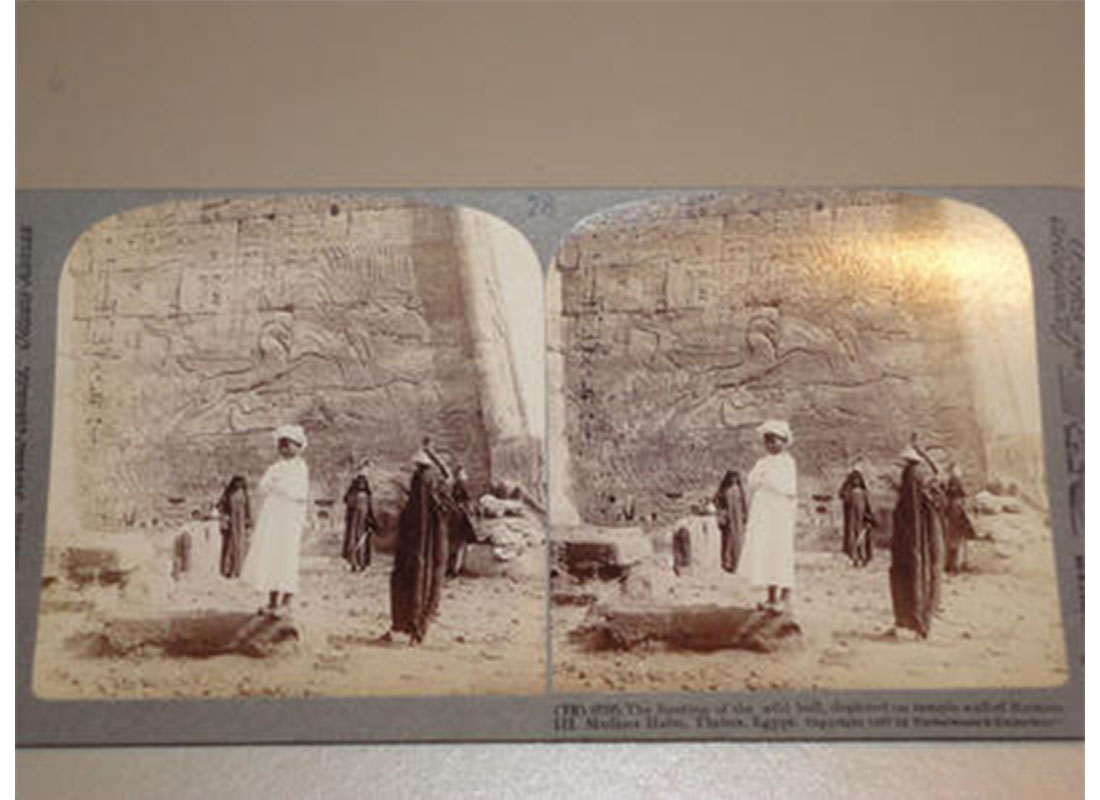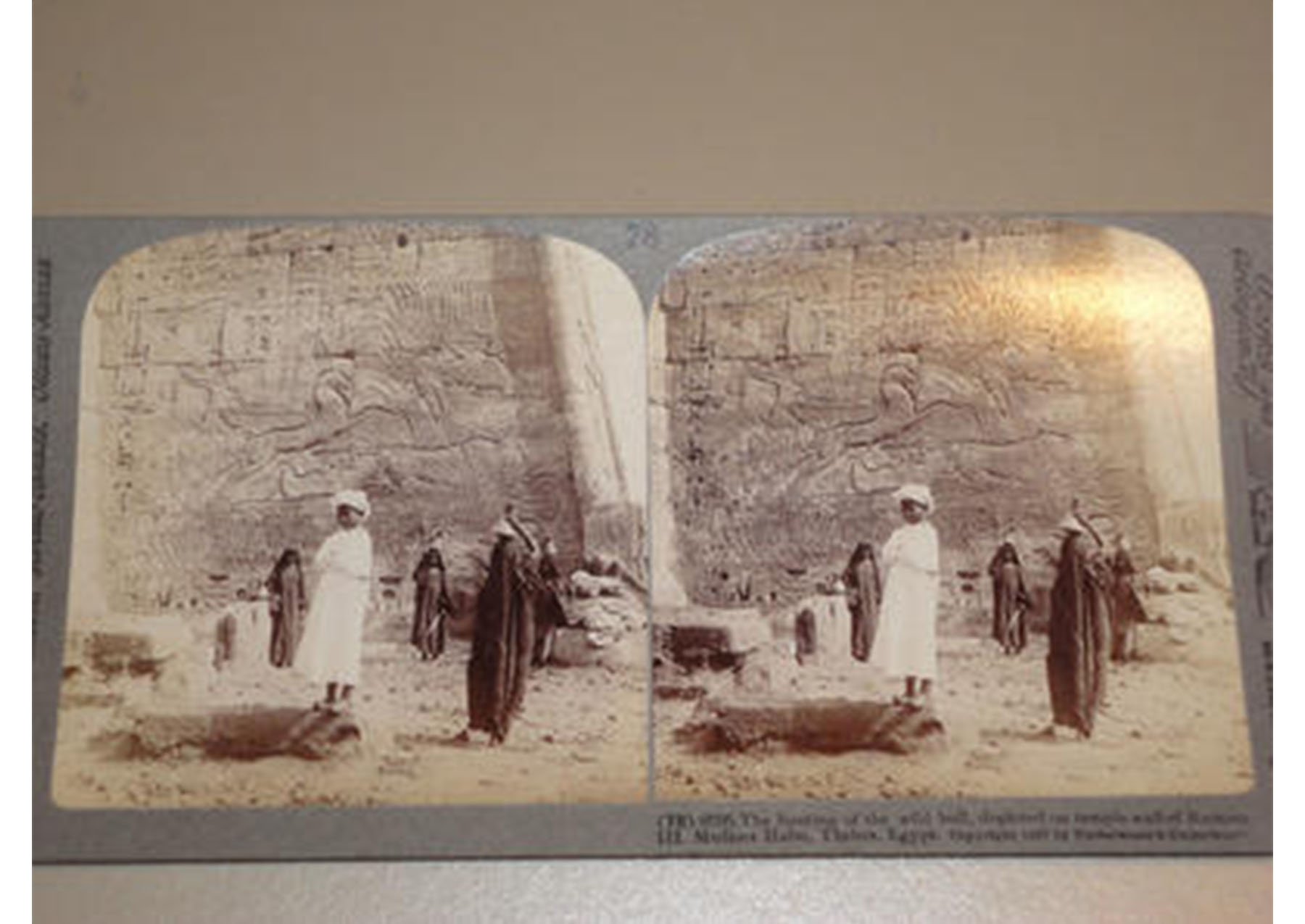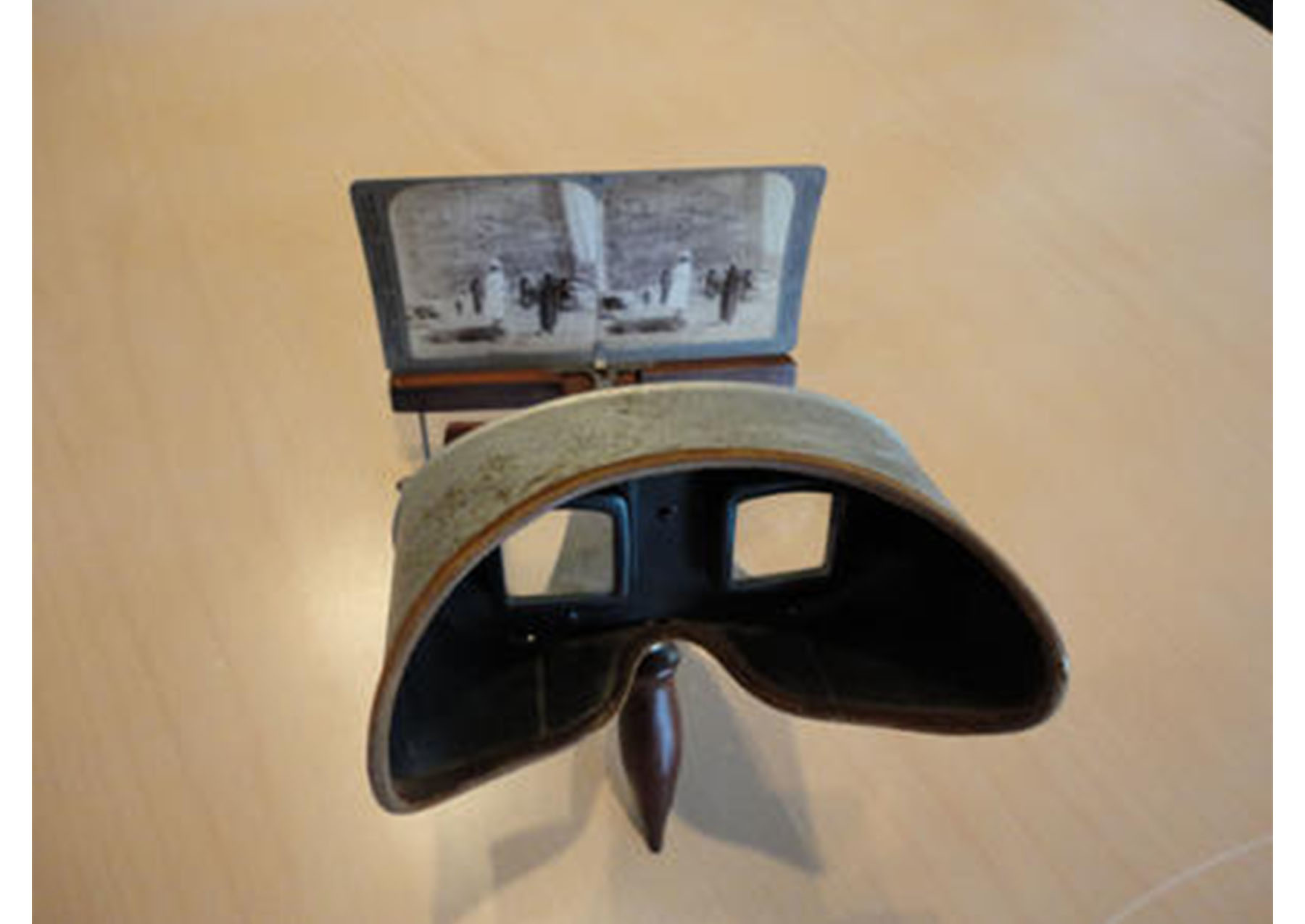
Traveling through Pictures
Amanda Shubert is the 2010-2012 Brown Post-Baccalaureate Curatorial Fellow at SCMA.
A recent and favorite discovery of mine in the Cunningham Center’s collection is this complete collection of American travel stereographs of Egypt made during the early twentieth century.
A stereograph is a pair of photographs—two of the same image—mounted side by side on a rectangular card, like this:

Stereograph. American, 1904. Bequest of Henry L. Seaver. Photograph by Amanda Shubert.
You view them through a stereoscope, an elaborate pair of glasses with magnifying lenses. There is a slot behind the lenses where the stereograph fits.

Stereoscope viewer. French, 1855. Purchased. Photograph by Amanda Shubert.
You look through the viewfinder, and the lenses trick your eye into combining the two photographs into one three-dimensional image of astonishing depth. The images merge, and then they kind of “pop”—suddenly you are seeing in 3D. It’s almost like looking through the small end of a telescope, at a tiny but perfectly clear scene way in the distance.
Stereoscopic photographs, or stereographs, were invented in 1849 by Sir David Brewster and unveiled in 1851 at London’s Great Exhibition, the first ever World’s Fair. Series of collectable travel stereographs like this one were undertaken by publishers who employed photographers to make them on site. The photographers worked both with the publisher and with the author of the accompanying text, an expert in the field, who gave the photographers a list of locations with detailed maps, plans and instructions. The author then wrote commentary for each image printed on the reverse side of the stereograph.
You might see this series of travel stereographs as the Victorian equivalent of a television travel documentary: providing a panoramic view of the major Egyptian tourist sites, and the typological version of a voice-over commentary. The production of stereoscopes fed off of the Victorian appetite for travel, democratizing travel for the growing middle class prevented from elaborate vacations by domestic or professional responsibilities or financial restraints.